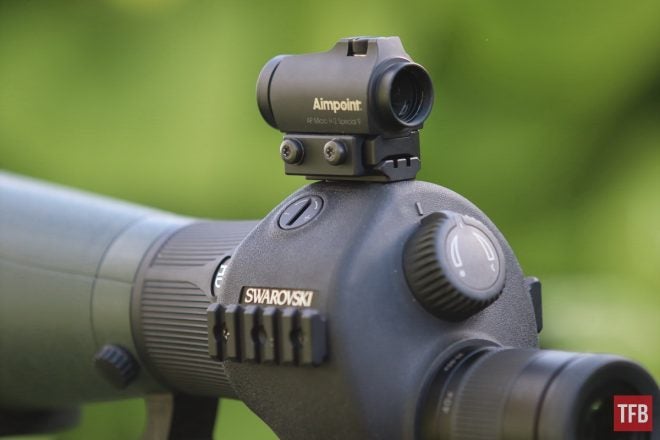A spotting scope may not be an absolute must for long range hunters and competitors, but it sure is a nice addition to your setup. To be able to call your or your friend’s shots to give him impact point corrections you also need a reticle, a feature that most normal spotting scopes lack.
The Swarovski STR80 offers the best of two worlds. It has a reticle (in either MOA or MRAD) that can be activated or deactivated as required. This means that you can deactivate the reticle if you’re going bird watching. Basically, it’s an illuminated reticle that you can fade in or out, including night vision settings. It’s pretty amazing when you see it.

An indication of where Swarovski wants to be in the market with the STR80 is the price tag. The MSRP is $3,999.00, but then you must add an eyepiece. In this review, we used the 20-60x eyepiece which is another $643.00. The other eyepiece is a 25-50x and it’s even more expensive. I wish I had it to be able to compare the two.
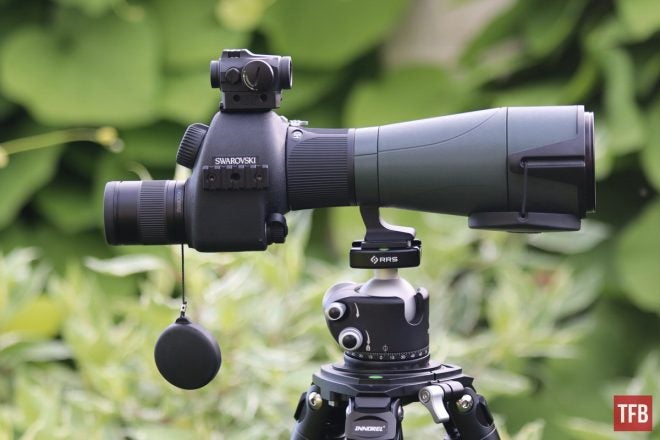
So what do you get for your money? To begin with, there’s an 80-mm objective diameter that offers a crystal-clear image with an astonishing detail recognition. Many of these terms are worn now, but really, the image quality is great. Even the best riflescopes come behind.
We did some side-by-side testing with some other spotting scopes (without reticles) and on a sunny day, it’s difficult to spot a huge difference between the Swarovski and Vortex Razor HD Gen 1. If anything, the Colour Rendering and reproduction of the light is better in the Swarovski, it looks more natural. In poor lighting conditions, the gap increases to Swarovski’s advantage.
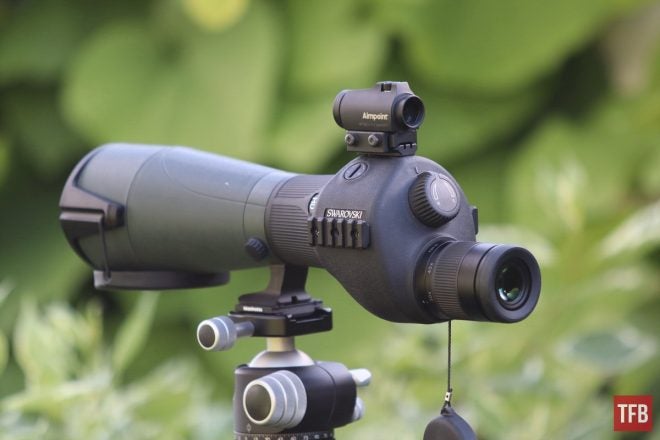
I also opted for the “Spuhr kit”, sold by Swarovski, which gives you Picatinny rails in 3 positions. If one can pimp something with Picatinny one should!
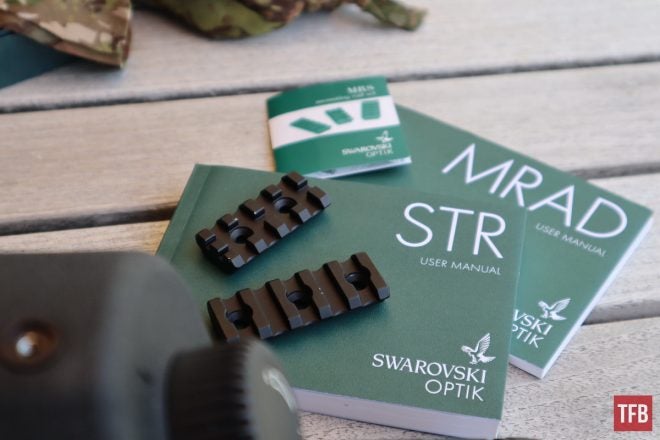
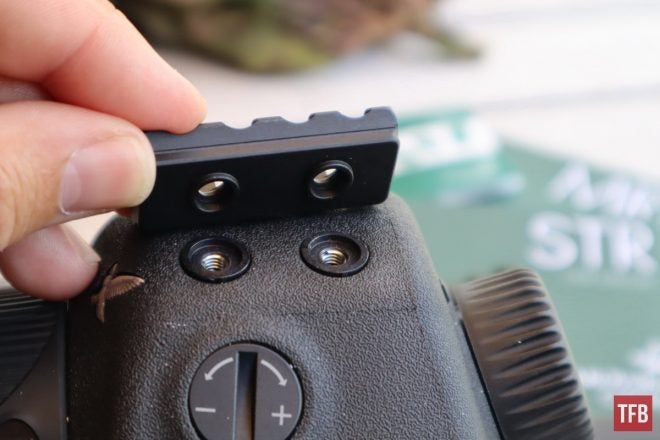
Below you can see the dioptric setting (+/-) which ensures that the reticle is in sharp focus.

The focus ring (with HD logo) on the STR80 is really nice, very smooth and almost too easy to turn.

Below: The battery compartment. The unit is powered by one CR123 battery which seems to last rather long.
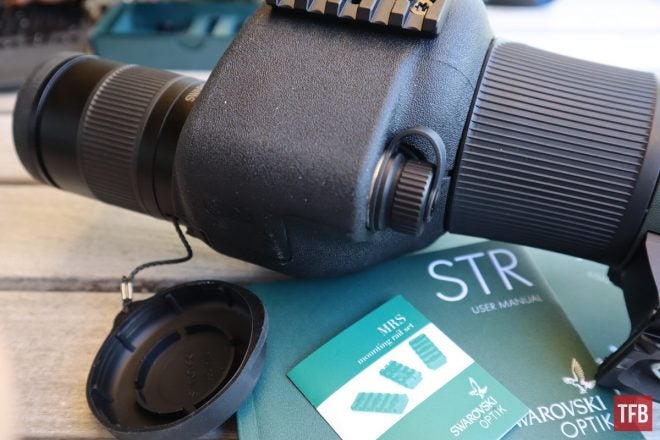
Below: The front lens cover is always there for you, attached with straps.

Below: Looking into the STR80.
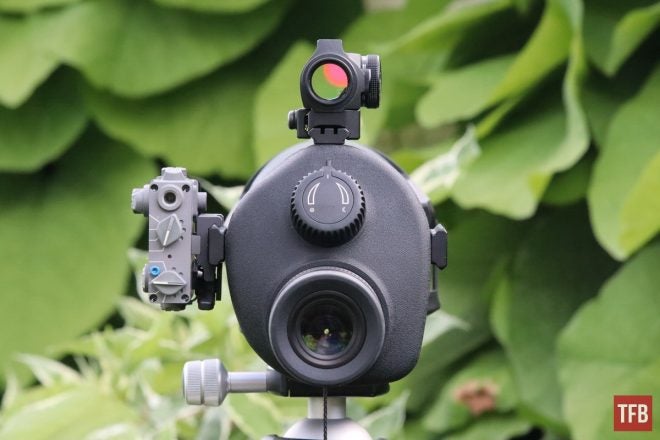
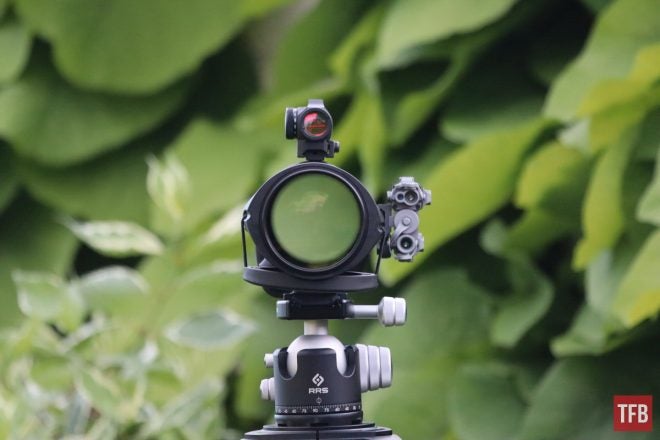
If you’re spotting using the lower range of the magnification, the depth of the image is breathtaking. Additionally, the scope is really forgiving. Unfortunately, you can’t really transfer this experience to a flat image. Apart from the best riflescopes from Schmidt & Bender this is the best image quality I’ve witnessed so far.

HD optics with fluoride-containing lenses
If you crank the magnification up to maximum, the depth of field is more of a challenge and you need a really good tripod for stability. It’s also good if you have the possibility to sit, or at least keep your head (eye) in the same position.
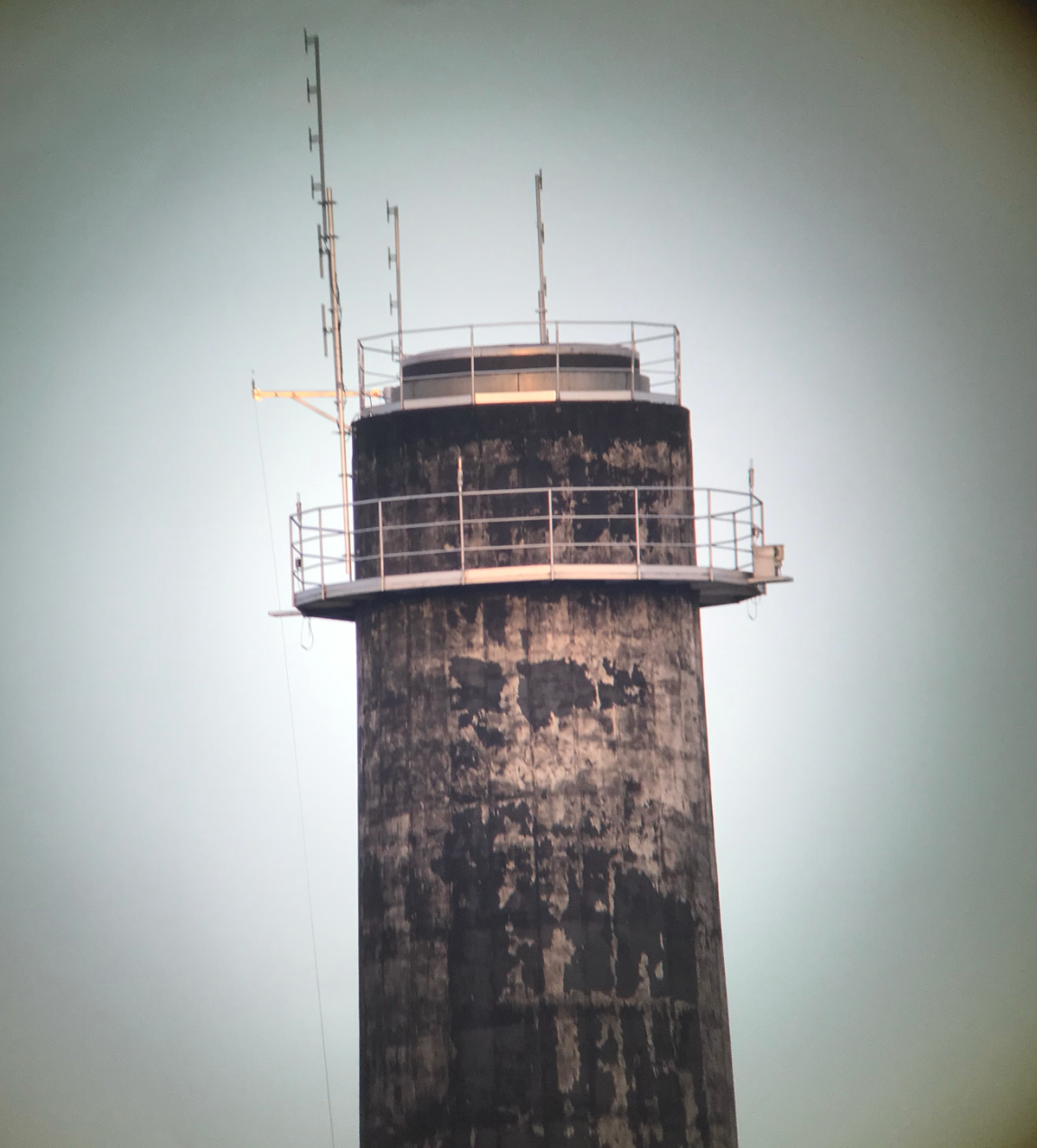
Swarovski STR80 at 60x magnification, using an iPhone freehand. 1300 yards.
Aimpoint Micro H-2
Why are you using an Aimpoint red dot on your spotting scope? The picture below says it all. It becomes really easy to find your target, whether it is a chimney or a star. Then you can just look into the eyepiece and enjoy the magnification of your choice. Note how far the chimneys are.
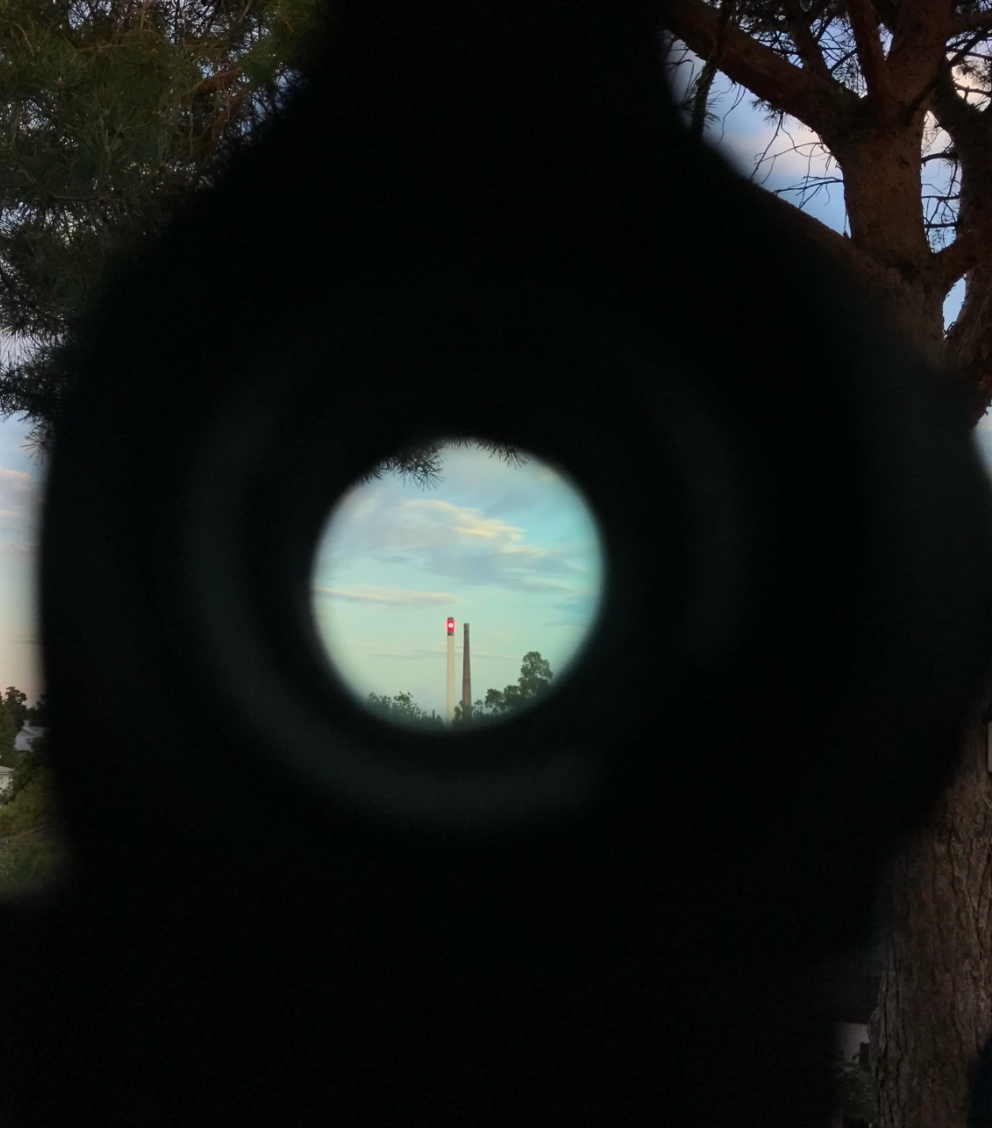
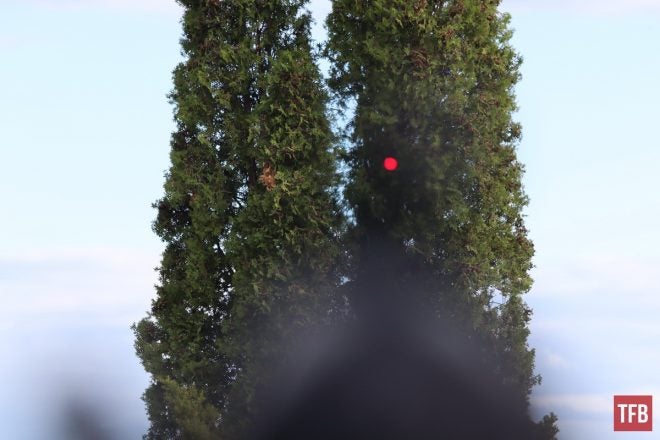
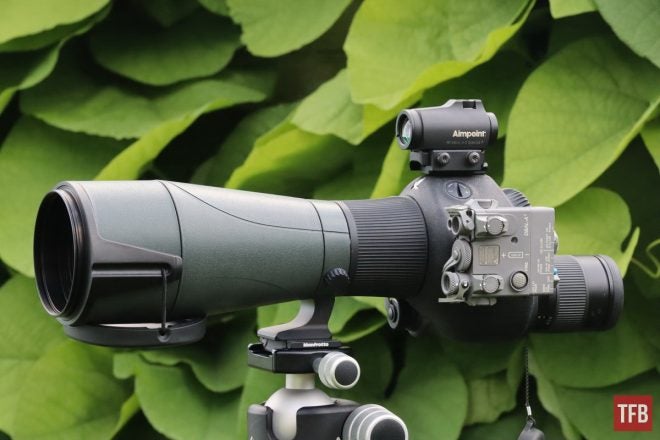
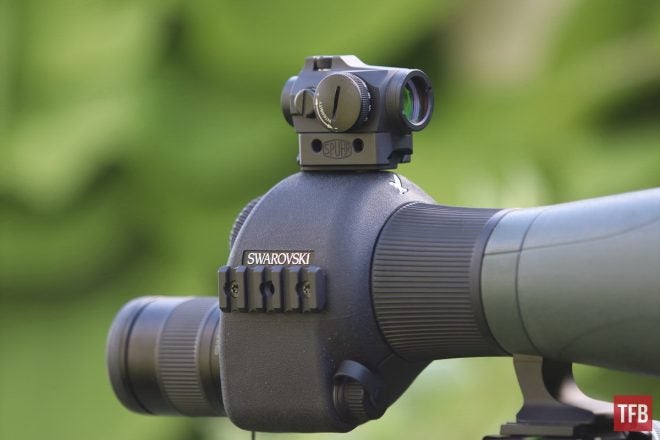
I also did some improvised trials with the Concamo Ghosthood, to camouflage it and check out what it looked like through IR and Thermal.

This is what it looks like through the Pulsar Axion XM30S thermal spotter with the Ghosthood on. Just note that this is not the Ghosthood’s intended use, but it seems to work.
The reticle
The reticle is available in either MRAD or MOA. Whatever riflescope you’re using should define what’s best for you, because you shouldn’t call MRAD readings to someone looking into an MOA reticle if you want to remain friends.
The reticle will get larger or smaller with the object in view as you adjust the magnification. With the MRAD you can help shooters to adjust shots in 0.10th MRAD increments at long range.
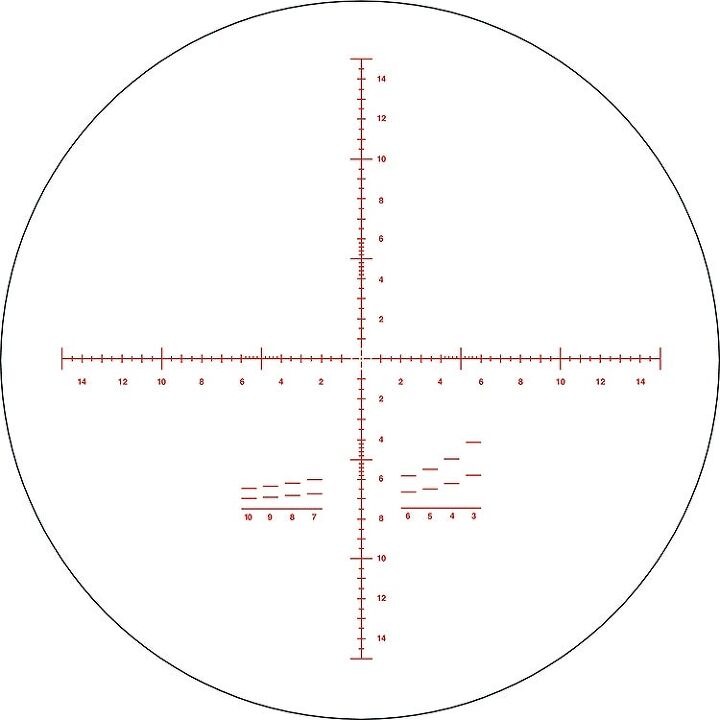
As mentioned, the reticle can be completely removed from the view so the STR 80 can be used as a regular spotting scope. There are 15 brightness levels for the reticle – 10 day levels, 5 night levels.
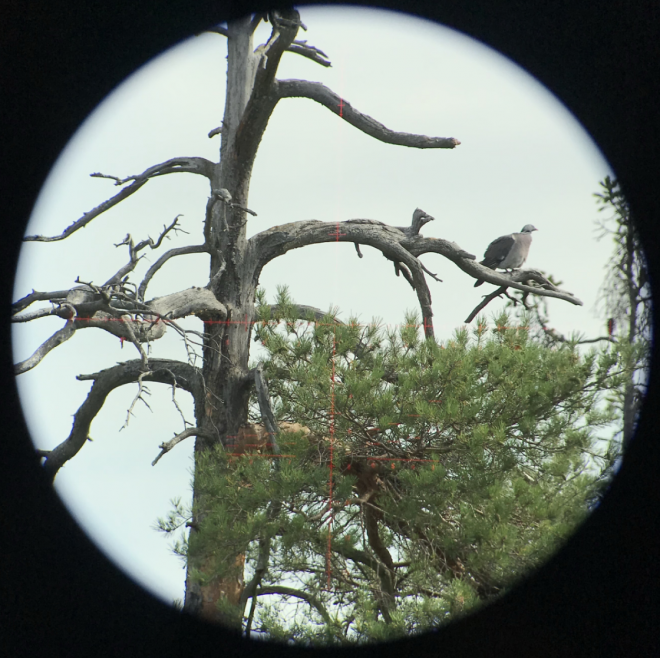
When you turn the reticle on you have an FFP MIL reticle at your hands.
No, no camera likes to capture both the illuminated reticle and the target at the same time but you get the idea.
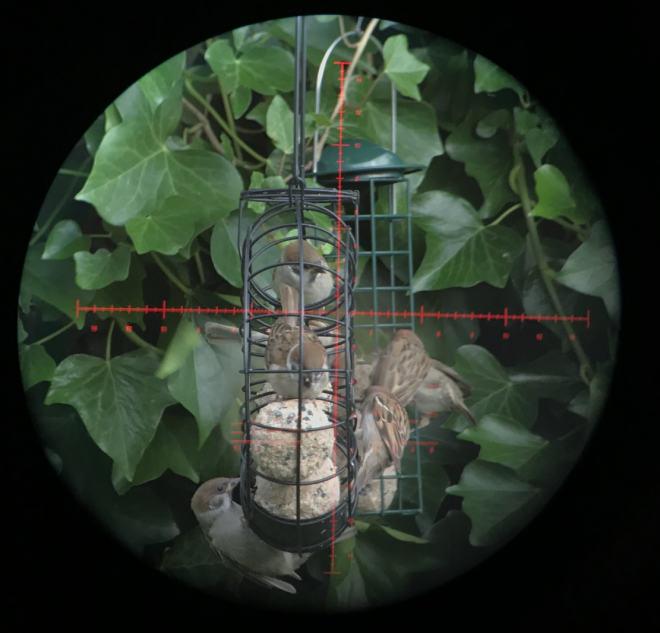
A tree and some birds in the garden to show the illuminated reticle.
The STR80 allows you to make out fine details over long distances. With the built-in reticle, you can identify the hit versus where the shooter aimed so that he can make the appropriate adjustment on his rifle scope or adjust his aim.
Watching the stars
August provided some excellent summer nights with clear skies. We were able to use the STR80 for watching the Moon and then discovered Jupiter and Saturn. Saturn is really tiny, but you could see the ring around it. We saw 4 moons around Jupiter. A little later Mars became visible. This was a great experience to share with the family and friends, and probably the first time ever that my wife approved of any of my purchases.
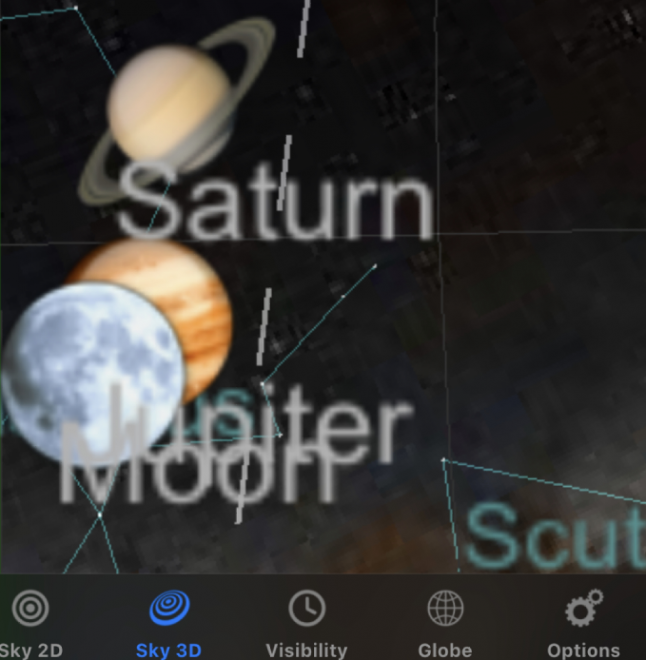
Screenshot from the app “Planets” (iOS).
The Moon, using a freehand iPhone through the STR80.
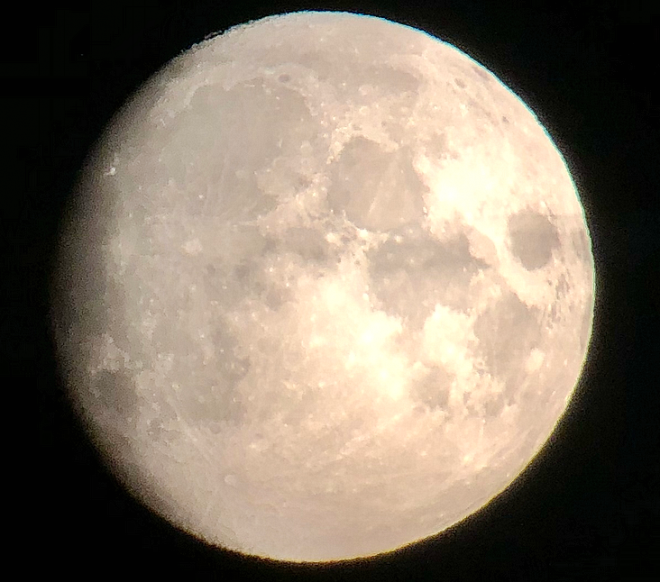
Using the Picatinny attachments with various options.

The STR80 comes with both 1/4-20 and 3/8-16 thread mount locations and Arca Swiss built into the mount.

For more information on the tripod and the ball head, read our review of Innorel RT90C Carbon Fiber Tripod with Really Right Stuff BH-55 Ball Head.
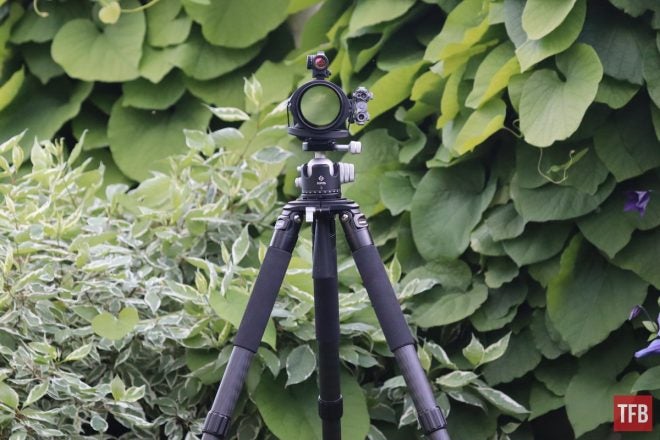
Technical Data STR 80
There is also an eyepiece for 25-50x, but the one tested here is:
Technical data STR 80 with eyepiece 20-60x
Conclusion
There are a lot of affordable spotting scopes with reticles out there. While the Swarovski STR80 may not be called “affordable”, I have yet to find a better spotting scope. Well, optically perhaps the Hensoldt spotter 60 could work as a benchmark, but it’s even more expensive and has reticle which is always shown. I tried to source a Zeiss spotting scope with a reticle for a very long time, but since they were unobtainable I gave up and bought the STR80 instead.
Apart from the brilliant optics, the coolest feature of the STR80 is its ability to fade out the reticle. If your family is using it to look at the stars, you just shut it off. The next day you can use it on the long range stage and call your buddy’s hits accurately at 1,500 yards. That’s a lot of double-tasking done there.
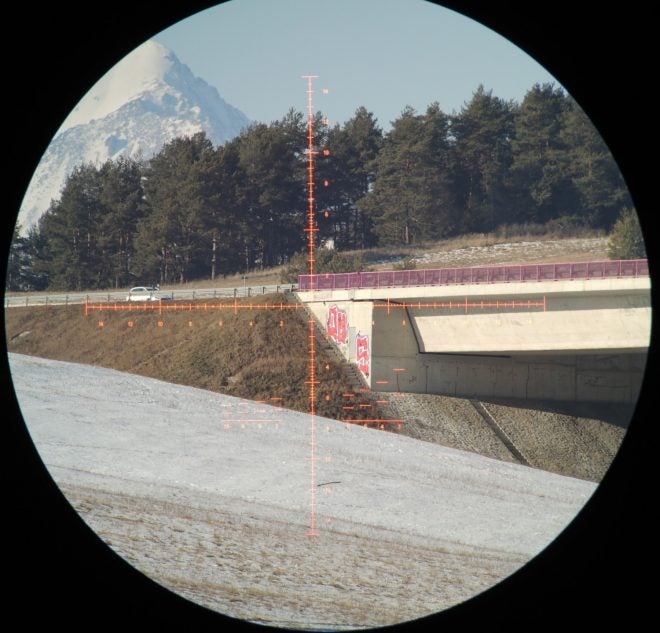
Picture by www.longrange.sk (Pavol Blahút). Used with permission.
The STR80 comes with an integrated sunshade and lens protection. You can order Picatinny rails to mount whatever accessories you may need. Not a lot of competitors can do all these things in one complete package.
Overall, there is not much left to wish for in terms of optics or mechanics. The only improvement I can think of is the brightness control knob, but it could be the kids who messed mine up. And I’m still looking for a custom bag to carry it in, as there isn’t one included.
Here is a direct link to the Swarovski STR80 product page.
Thanks for reading. Feel free to tag a friend who needs an STR80, then borrow it from him or her.
We are committed to finding, researching, and recommending the best products. We earn commissions from purchases you make using the retail links in our product reviews. Learn more about how this works.
 Your Privacy Choices
Your Privacy Choices

